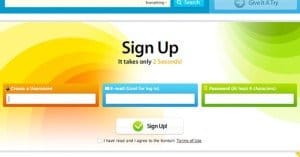How Much Traffic Should Your Website Have?

SEO. Content marketing. Traffic growth. Conversion tracking. Split testing. Everything, it seems like, written about blogging online comes down to one thing; pulling in more traffic. The “how” is well-documented, on this site and on dozens of others. The “why” is simple; for more exposure and more sales. There’s just one question too few businesses think to stop and ask.
How much traffic should you have? How much traffic do you need? How much is enough? Is there such a thing as too much traffic?
A Matter of Numbers
Traffic is a matter of numbers and scale. Some sites are happy to get 50 visitors a day. Some sites are pushing beyond 200 per day. Some sites blink and miss 10 new visitors. Some of the largest sites get thousands of hits in an hour.
Unless you’re the next Facebook, chances are you’re not going to be one of those sites with millions of monthly visitors. A more realistic goal may be a number in the hundreds, or thousands, depending on your niche.
Here’s the thing. Traffic numbers are incredibly variable from industry to industry and niche to niche. A small blog focusing on construction contracting can’t expect more than a thousand views in a month. A small blog reviewing video games might hit it off and receive hundreds per day. It’s all about who you are and where you are.
Types of Traffic

Traffic numbers are bogus. You may not want to hear it, but it’s true. Traffic numbers alone don’t matter. Anyone can go to Fiverr and pay for a few hundred thousand hits, sending their traffic numbers through the roof. Then the next month rolls around and those numbers drop again, with no lasting effect.
A lot of what you find in traffic growth advice comes down to gathering, not more traffic, but the right traffic. One single, lonesome engaged user is worth their weight in digital hits. That’s why common advice always stresses that you write relevant content. If you’re a blog for a business selling gardening supplies, you don’t really want to be blogging about sports cars or what your kids got into today. It’s not relevant. The people who might be interested in those cars or your kids are not the kind of people who will be buying your gardening supplies.
Costs and Conversions
All of this is very nice, but it doesn’t answer the question at hand. How much traffic should your site have? Well, there’s no solid answer. No one can give you a fixed number to shoot for. If you just launched your site, 10 daily users would be fantastic. If you’ve been at it for a month, maybe you should be looking for 30 daily users. If you’re in a high traffic niche and have quality content, you might be looking at a hundred users every day. Or maybe not! And therein lies the problem.
Instead of looking for a number to compare yourself to, set a number as a goal. To do this, you need to go back to the idea of growth.
When you’re working to grow your traffic, what you’re really doing is working to grow your conversions. The goal of any business blogger, after all, is to bring in more business.
Consider a few factors. How much does your site cost to operate from month to month? Tally up the costs. Add together the cost of the server, any lingering payments for contractors, paying for ghostwritten content, paying for upkeep, paying for advertising; everything. Divide that number up into a daily figure.
Now consider the price of your products. If you only have one product, this is easy. If you have a whole storefront, you’re going to need to come up with an average cart size figure. You can do this via analytics if you’ve run the store for a while, but if you’re a new store, you may need to estimate.
Now take a look at your existing audience, if you have one. How many users come in on a daily basis? Of those, what is your conversion rate?
With all of this information, you can put together a calculation. How many products – or average carts – do you need to sell to make up your costs and bring in a profit? How many users do you need to pull in, when considering your conversion rate currently, to reach those monetary goals?
This will give you a baseline traffic number. From there, you can expand it. How much profit do you want to generate? How many more users do you need to reach that level?
Of course, you can do other things to increase your profits. Split testing, marketing, better targeting, working to increase conversion rates, even adjusting the prices of your products all have an effect. Isolating the sheer volume of users is just one facet of the stone.
The Goal of Growth
How do you set your goals? Where do your profits go? Different bloggers have different purposes. For example, a personal blogger may have a goal of a certain amount of income per day to meet their expenses and be able to afford a nice vacation once or twice per year. A small business blogger may be looking to drive more visitors to their physical store. A web business blogger may be looking for more downloads of their app or sales of their software. The profits from these exercises, were do they end up? Are they lining the pockets of the employees, or are they reinvested into the business to continue growth?
Considering all the factors above, it’s important to calculate goals. Figure out where you want to be a month from now, six months from now, a year from now, a decade from now. Figure out what sort of growth milestones you need to reach to achieve those goals. Figure out what parts of your site need to improve to reach those goals. It might be traffic volume, certainly. It might be a more targeted audience with a higher conversion rate. Once thing’s for sure; more traffic is rarely detrimental, unless it’s crashing your website entirely.
 ContentPowered.com
ContentPowered.com





